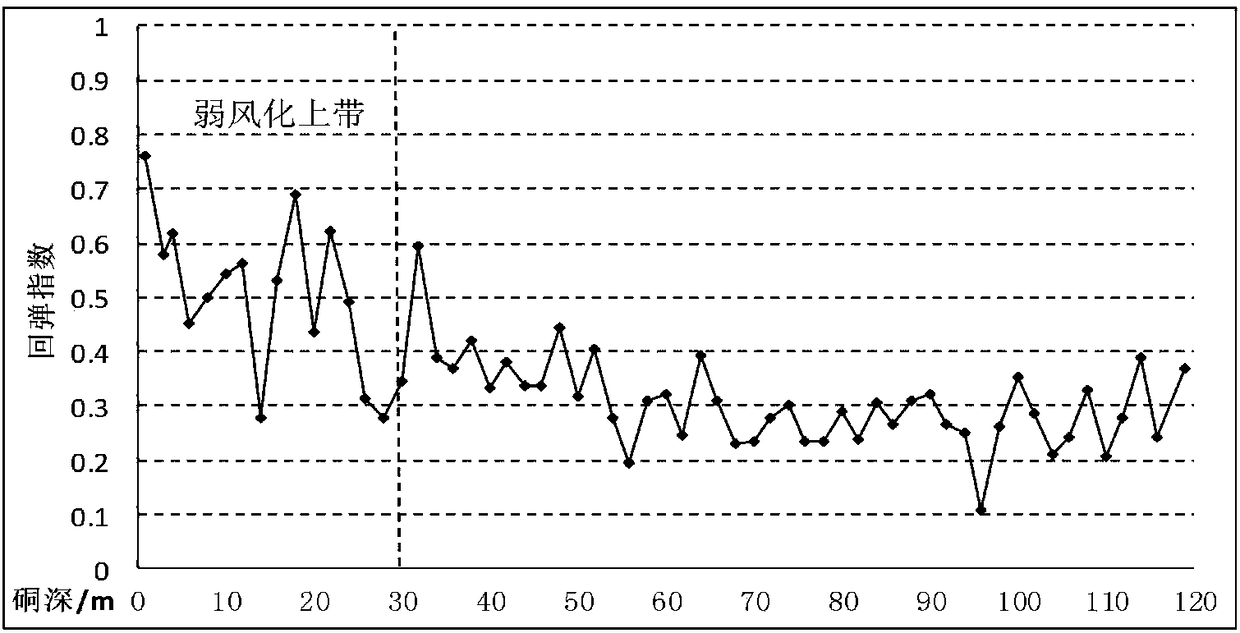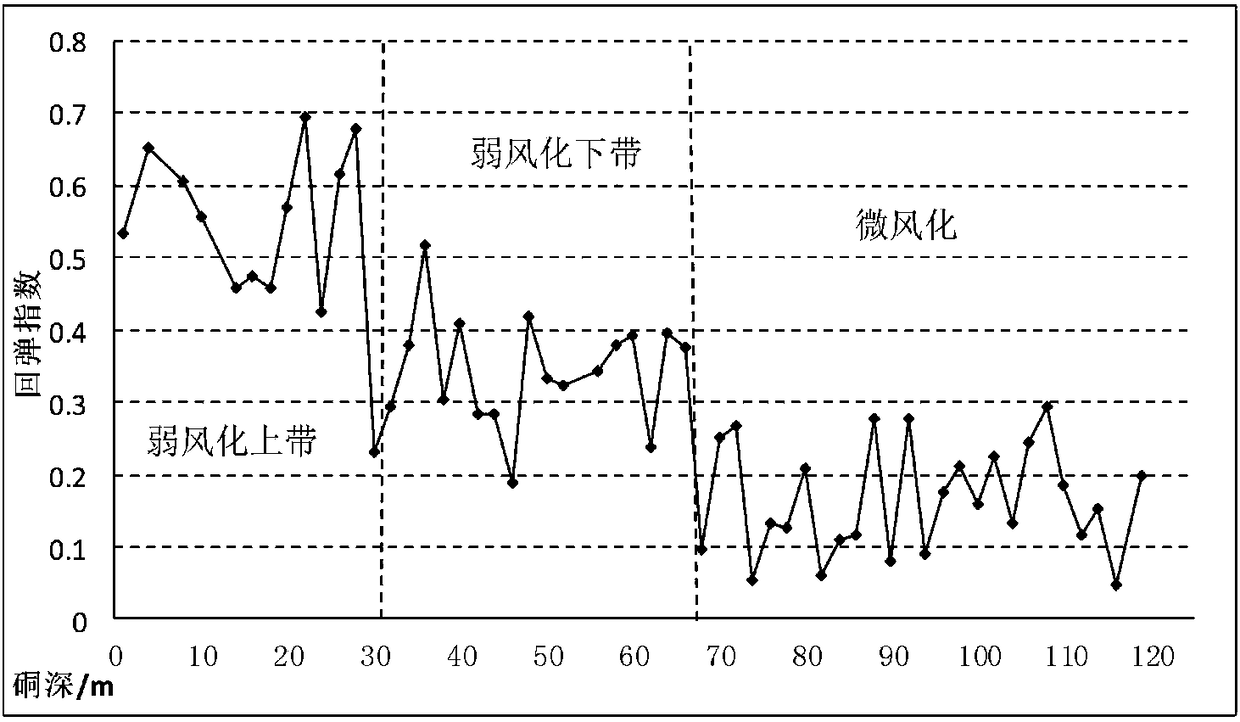Rapid quantitative evaluation method of rock weathering degree and application thereof
A weathering degree and quantitative evaluation technology, which is applied in the direction of measuring devices, test material hardness, instruments, etc., can solve the problems that there is no quantitative judgment of the weathering degree of rock mass, and achieve low cost, fast speed and strong pertinence
- Summary
- Abstract
- Description
- Claims
- Application Information
AI Technical Summary
Problems solved by technology
Method used
Image
Examples
Embodiment 1
[0055] A method for rapid quantitative evaluation of rock mass weathering degree, specifically comprising the following steps:
[0056] Step 1: collection of test data, which specifically includes the following steps:
[0057] 1. Fresh rock rebound value (RH) measurement:
[0058] In the working area, the ZC3-A rebound tester is used to perform the rebound test on the relatively flat fresh rock section formed by rock excavation or the surface of the unrusted structure. On the fresh section formed by the excavation of the rock mass section, if there is no micro-new rock mass, select a large rock in the weakly weathered zone, and break it to the section where fresh rock can be seen for testing. The rebound value measuring point is required to be The thickness of the rock block in the hitting direction is not less than 10cm, and the distance from the measuring point to the side boundary is more than 3cm. The rock rebound value (RH) of different types of rocks is generally differ...
Embodiment 2
[0085] PDZ11 on the left bank of a hydropower station in Tibet, on the basis of qualitative judgment combined with norms, uses the rebound value and rock mass weakening rebound index to clearly complete the quantitative determination of rock mass weathering degree and zoning, as shown in Figure 1-3 shown. Based on the normative qualitative description, comprehensive rock rebound index and its standard deviation curve, steep crack weakening rebound index and slow crack weakening rebound index, it is determined that in PDZ11, from the entrance to the inside, 0-30m is the weakly weathered upper zone, 30 ~67m is a weakly weathered lower zone, and the 67m is a slightly new rock mass.
Embodiment 3
[0087] PDZ07 on the left bank of a hydropower station in Tibet, based on the qualitative judgment combined with the norms, used the rebound value and weakened rebound index to complete the quantitative determination of rock mass weathering degree and zoning, as shown in Figure 4-6 shown. Based on the normative qualitative description, comprehensive rock rebound index and its standard deviation curve, steep fracture weakening rebound index and slow crack weakening rebound index, it is determined that from the entrance to the inside of PDZ07, 0-26m is the weakly weathered upper zone, and 26-26m is the weakly weathered upper zone. The 117m is the weakly weathered lower zone, and the 117m is the slightly new rock mass.
[0088] In Example 2-3, a certain hydropower station in Tibet is located in the deep valley section of the upper reaches of the Lancang River, and is located in the southeast of the Qinghai-Tibet Plateau. The engineering geological conditions are very complicated, t...
PUM
 Login to View More
Login to View More Abstract
Description
Claims
Application Information
 Login to View More
Login to View More - R&D
- Intellectual Property
- Life Sciences
- Materials
- Tech Scout
- Unparalleled Data Quality
- Higher Quality Content
- 60% Fewer Hallucinations
Browse by: Latest US Patents, China's latest patents, Technical Efficacy Thesaurus, Application Domain, Technology Topic, Popular Technical Reports.
© 2025 PatSnap. All rights reserved.Legal|Privacy policy|Modern Slavery Act Transparency Statement|Sitemap|About US| Contact US: help@patsnap.com



